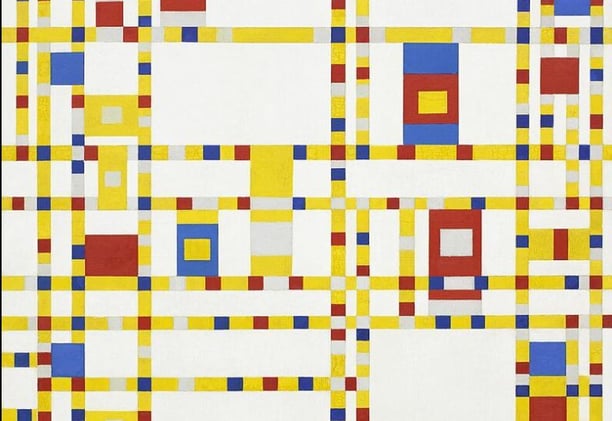- Crazy Pablo
- Archive
- Page 2
Archive
Dancing in a Grid: Mondrian’s Broadway Boogie Woogie
What are the signs that a cultural capital is shifting? Is it when artists start to leave? When investors arrive? When Disney builds a theme park? This week, after reading about the new Disney opening in Dubai, I kept thinking about cities, rhythms, and how cultural gravity quietly moves from one place to another. It reminded me of a painting by Mondrian—one that feels like someone tuning in to a new city for the first time.

Not One Woman: De Kooning’s Woman I
Some images feel familiar even when they’re completely strange.When I saw Woman I again recently, I realized how much it isn’t about a woman. It’s about the image of woman—what it’s been, how it shifts, and how it keeps returning in different forms.De Kooning painted this as part of a series—Women I–VI—over several years. Not portraits. Not muses. Something older, messier, harder to define.

Saved by His Own Hand: Fujita Who Drew Cats
We’ve seen how Foujita painted war. But what did he turn to after the noise?Cats.Not just as animals—but as symbols of calm, softness, and maybe even survival. After the chaos, Foujita found a different kind of power: one that didn’t shout or demand, but simply was. His cats aren’t just pretty—they’re healing.

No Glory Left: Foujita’s Descent into Chaos
Last week, we stood at the edge of control—war rendered with eerie precision.This week, we fall in.In Last Stand of Attu, Foujita abandons balance entirely. Gone are the clean lines and quiet faces. What’s left is cold, crowded, and collapsing.It’s still beautiful. But now the beauty hurts. Let’s take a breath and step inside.

Beauty at War: Foujita and the Elegance of Violence
This week I chose a painting that deals with violence during wartime—a heavy subject, I know. But one of the gifts of art is that it lets us look at difficult things from a safe distance. It creates space to feel, to ask, and to reflect—without fear.Let’s take a quiet moment to look closely at a work that is anything but quiet.

Georgia O'Keeffe’s Black Iris – A Desert Bloom Up Close
I love slipping into a zone where everything else fades away—the noise, the distractions, the rush of the world. Some artworks make this effortless, pulling you into a space of stillness and focus. Georgia O’Keeffe’s Black Iris does exactly that. It invites you to zoom in, lose yourself in its details, and let your eyes gently trace each curve and fold, as if seeing through touch. It’s a chance to see the familiar in a completely new way.

Step into the Night: Edward Hopper's Nighthawks
There’s something about late-night stillness.A quiet escape from the noise, the chaos, the rush of the day.In that hush, loneliness turns soft—almost comforting.A place to breathe, to feel, to sit with your melancholy for just a moment.That’s the space Edward Hopper’s Nighthawks opens up for us. Painted in 1942, this iconic piece invites us to explore themes of isolation, urbanization, and the human condition.

Escape into Color: Franz Marc’s The Dream
What makes this painting so hypnotic? Why do we turn to art when reality becomes too much?Franz Marc painted The Dream in 1912, just as the world around him was growing darker. His art became a refuge—a world of vibrant colors and peaceful animals, untouched by human conflict. Let’s step into this dreamlike vision together.

Drawn Into the Depth of Titian’s Motion: Bacchus and Ariadne
What makes this painting so dynamic? How did Titian revolutionize the way artists capture movement? Today, we’re diving into Bacchus and Ariadne (1522–1523), a masterpiece that pulses with energy and emotion, shaping the future of art for centuries to come.

Seeing Sound, Feeling Color: Kandinsky’s Spiritual Abstraction
What if you could hear a painting? Wassily Kandinsky believed you could. For him, colors had sound, and shapes carried rhythm. He saw painting as a spiritual language, a symphony of emotions beyond words. That’s why I chose this electrifying piece for us today—Painting with Three Spots, No. 196 (1914).












